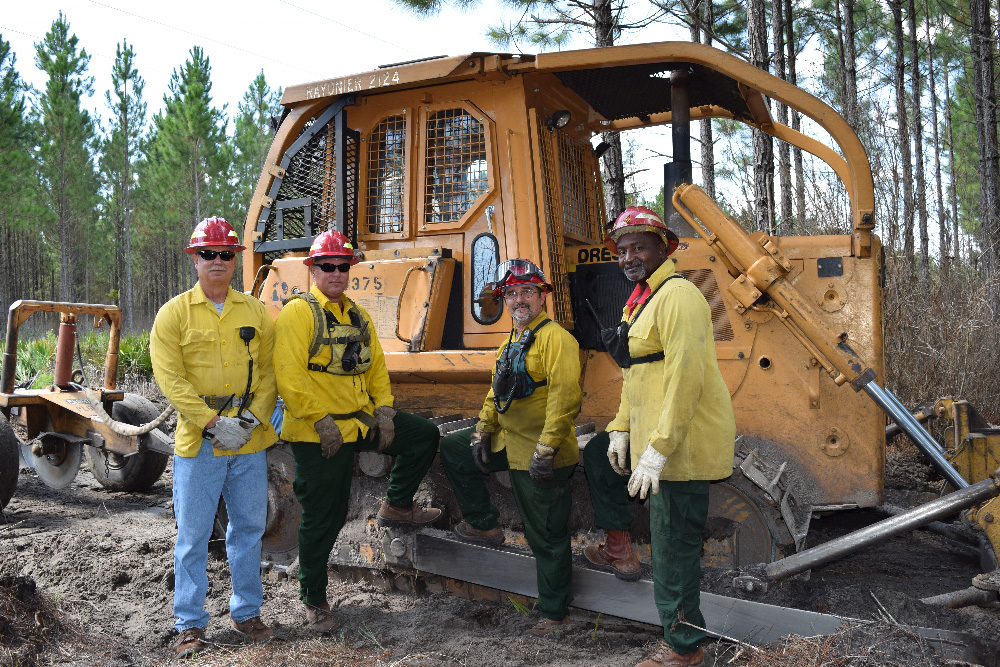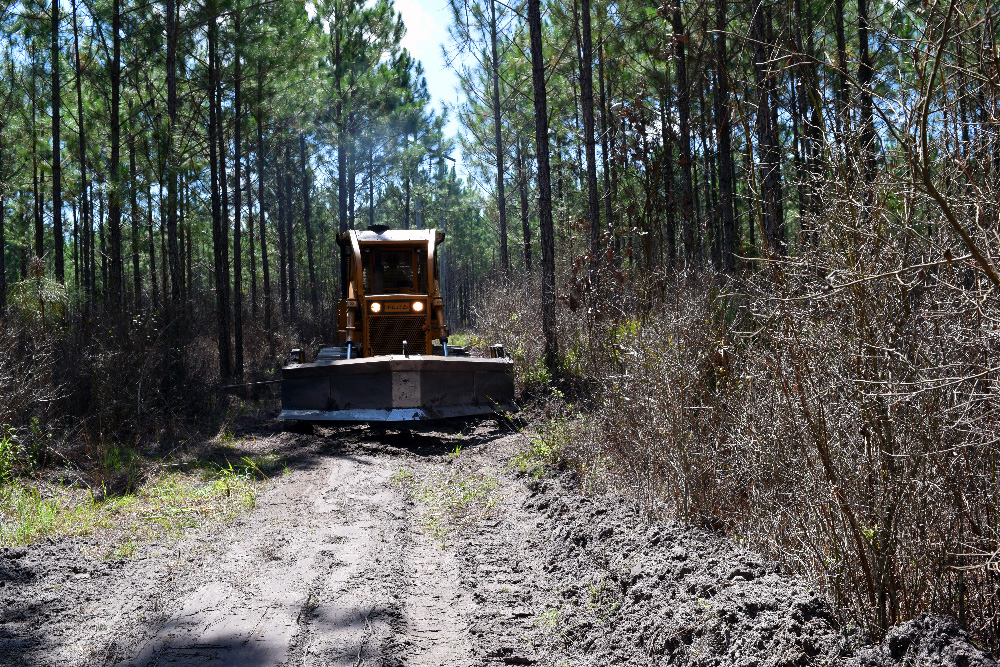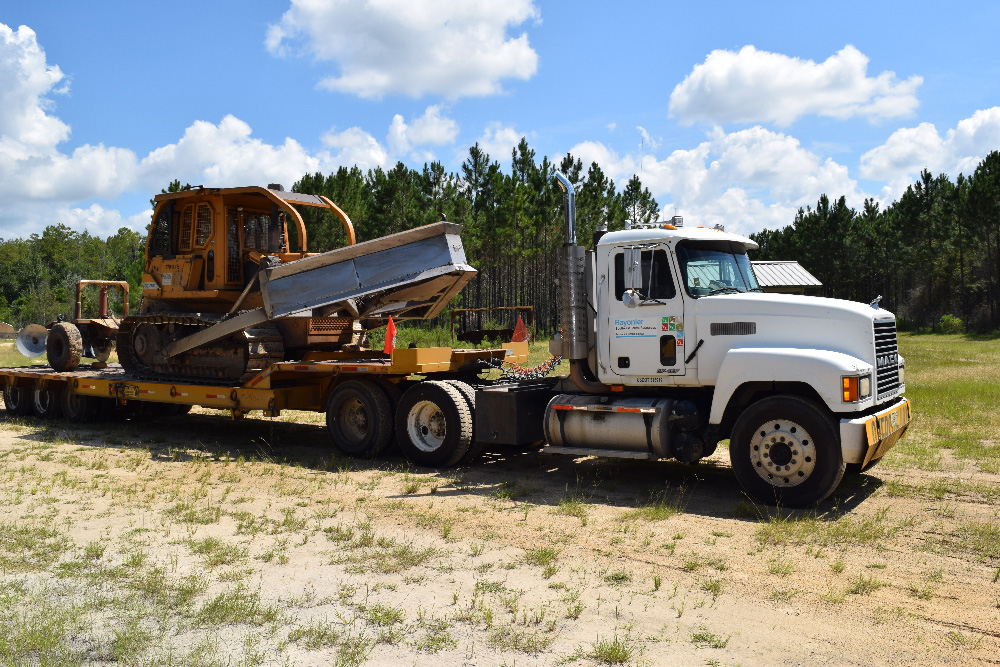Our forest rangers work year-round to prevent fires. During fire season, they’re ready to respond at a moment’s notice if disaster strikes.
Rayonier’s forest rangers are like warriors primed for battle during fire season.
Patrick Hughes, based in our Coastal Resource Unit in Yulee, Florida, spends March through August watching the weather, communicating with local firefighters and taking preventative measures wherever Rayonier land appears vulnerable. His tractor and radio are always close by, just in case.
Preventing Forest Fires

Throughout our ownership, we rely on forest rangers to prevent fires on our land and our neighbors’ land. Their first job when they survey a stand of trees is not to see the trees at all, but to see the fuel around them—the dry brush, undergrowth, and other risk factors that could feed a fire.
The team creates “fire breaks” and “fire lines,” using tractors to clear wide trenches, eliminating fuel for a fire and making it less likely to spread past the trenches.
When it’s prudent to do so, they also take the lead in controlled burns, putting fire to work by burning off potential fuels in smaller, carefully-monitored burns in select portions of Rayonier’s forests.
“It’s good training for us and it benefits the land,” Patrick explains, noting that clearing older undergrowth that competes with the trees creates room for new growth that’s attractive to wildlife.

“A Dangerous Time of Year”
Despite the ongoing preventative measures, though, “When there are high winds, low relative humidity and low rainfall… it’s a dangerous time of year,” Patrick says.
Those were the conditions when a fire broke out in early 2018 a few miles from Patrick in Yulee. A spark from a train had caught some brush on fire, quickly spreading toward a heavily populated area near Rayonier land.
Rushing to the scene of a neighboring fire
Knowing that area has prevalent broom sage, a “flashy fuel,” Patrick rushed to the scene with a tractor fitted with a fire plow attachment. He saw that the fire was headed away from Rayonier’s nearby land, but a local fire chief alerted him it was heading rapidly toward an apartment complex.
Patrick, who is temporarily deputized by the Florida Forest Service in fire emergencies, took his Rayonier tractor and rushed to the scene.

The first to respond to the fire, Patrick found traces of an old fire line between the blaze and the apartment complex—a line he had plowed, himself, several years ago during a similar fire.
He replowed the line to create a wide, clear section of land between the fire and the apartments. Then he worked to put the fire out blaze-by-blaze (it had spotted, with separate fires in seven or eight spots, all moving toward the apartments). Eventually, close to 100 firefighters responded to the blaze. Thanks in large part to Patrick’s efforts, the fire never reached the apartment complex and was contained within four hours.
Want to learn more? Read about Rayonier’s fire prevention efforts and hear from wildland firefighters here.









Leave a Comment